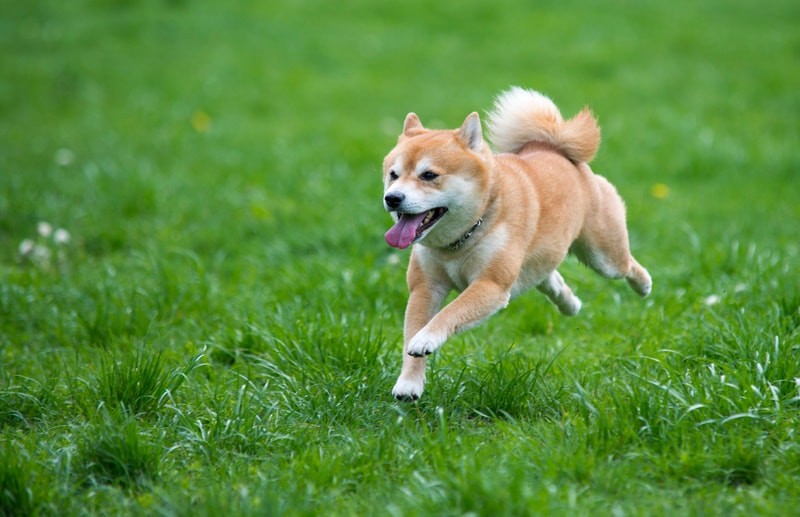
The Shiba Inu, an ancient Japanese breed, has garnered significant attention regarding its temperament and potential for aggressive behavior. While not inherently aggressive, recent studies indicate that Shiba Inus score a 69% pass rate on standardized temperament tests, lower than many popular breeds like Labrador Retrievers (92.4%) and German Shepherds (85.3%). Their independent nature, protective instincts, and strong prey drive can manifest as aggressive tendencies if not properly managed through early socialization and consistent training. This report examines the factors contributing to aggression in Shiba Inus and evaluates evidence-based approaches for preventing and managing such behaviors.
Scientific Research on Shiba Inu Aggression
Behavioral Trait Analysis
According to a comprehensive scientific study analyzing behavioral traits and aggression in Shiba Inus, two key factors were identified as significantly correlated with aggressive behaviors. The research found that "reactivity to stimuli" had a significant positive correlation with all four types of aggression studied (owner-, child-, stranger- and dog-directed), with P-values ranging from 0.007 to <0.001. Additionally, low "sociability with humans" was strongly negatively correlated specifically with child- and stranger-directed aggression (P<0.001).
Temperament Test Performance
The American Temperament Test Society's evaluations provide objective data on Shiba Inu temperament compared to other breeds. Test results show Shiba Inus have a 69% pass rate, with 841 out of 960 dogs passing standardized temperament assessments. This places them lower than many popular breeds like Labrador Retrievers (92.4%) and German Shepherds (85.3%) but higher than some smaller breeds. The testing specifically measures a dog's ability to interact appropriately with humans, human situations, and environmental factors. Failed tests don't necessarily indicate aggression but rather any unacceptable behavioral response during evaluation scenarios.
Behavioral Traits Associated with Different Types of Shiba Inu Aggression
Prey Drive and Resource Guarding
While previous sections focused on general temperament testing, this section examines specific behavioral traits linked to aggression types. According to research, Shiba Inus exhibit strong prey drive due to their hunting heritage, leading to predatory aggression particularly toward smaller animals and birds. Resource guarding behavior manifests as territorial defense of valued items, spaces, or family members. This protective instinct stems from their historical use as watchdogs and can trigger aggressive responses when they perceive threats to their resources.
Environmental Triggers and Fear Response
Building on earlier findings about reactivity correlations, environmental factors play a crucial role in triggering Shiba Inu aggression. Studies show that improperly bred Shiba Inus from puppy mills often develop anxiety and fear-based aggression issues compared to well-bred specimens. Fear aggression emerges as a defensive response when the dog feels cornered or threatened, making it one of the more dangerous forms of aggression. Environmental stressors that commonly trigger fear responses include unfamiliar situations, loud noises, and perceived threats to their territory. The breed's primitive nature and independent temperament can amplify these responses if not properly managed through early socialization and training.
Socialization and Training Impact on Shiba Inu Aggression
Early Intervention and Prevention
While previous sections focused on innate traits and environmental triggers, this section examines how proper socialization affects aggression prevention. According to research, early socialization during the critical period between 3-14 weeks is essential for preventing aggressive tendencies in Shiba Inus. The study found that dogs exposed to varied stimuli, people, and environments during this window showed significantly lower aggression scores across all four measured types (owner-, child-, stranger- and dog-directed aggression).
Exercise and Mental Stimulation Effects
Building on earlier findings about reactivity, proper physical and mental outlets play a crucial role in managing aggressive behaviors. Studies indicate that insufficient exercise and mental stimulation can lead to redirected aggression in Shiba Inus. High-energy dogs that don't receive adequate physical activity are more likely to display aggressive behaviors due to pent-up energy. Regular exercise through activities like daily walks, secured off-leash play, and mental enrichment games helps reduce aggressive tendencies by providing appropriate outlets for their natural drives and energy levels. This is particularly important given their hunting heritage and independent nature, as lack of proper stimulation can result in frustrated behaviors manifesting as aggression.
Conclusion
Research indicates that Shiba Inus are not inherently aggressive, but they do have specific behavioral traits that can lead to aggressive responses if not properly managed. Scientific studies have identified high reactivity to stimuli and low sociability with humans as key factors correlated with different types of aggression in the breed. This is reflected in their moderate 69% pass rate on standardized temperament tests, which places them lower than some popular breeds but not among the most aggressive.
The research emphasizes that proper early socialization, adequate exercise, and mental stimulation are crucial for preventing aggressive tendencies in Shiba Inus. Their strong prey drive and resource guarding instincts, stemming from their hunting heritage, require careful management through training and environmental controls. These findings suggest that while Shiba Inus can make wonderful companions, prospective owners should be prepared to invest significant time in early socialization, training, and providing appropriate outlets for their energy to minimize the risk of aggressive behaviors developing.